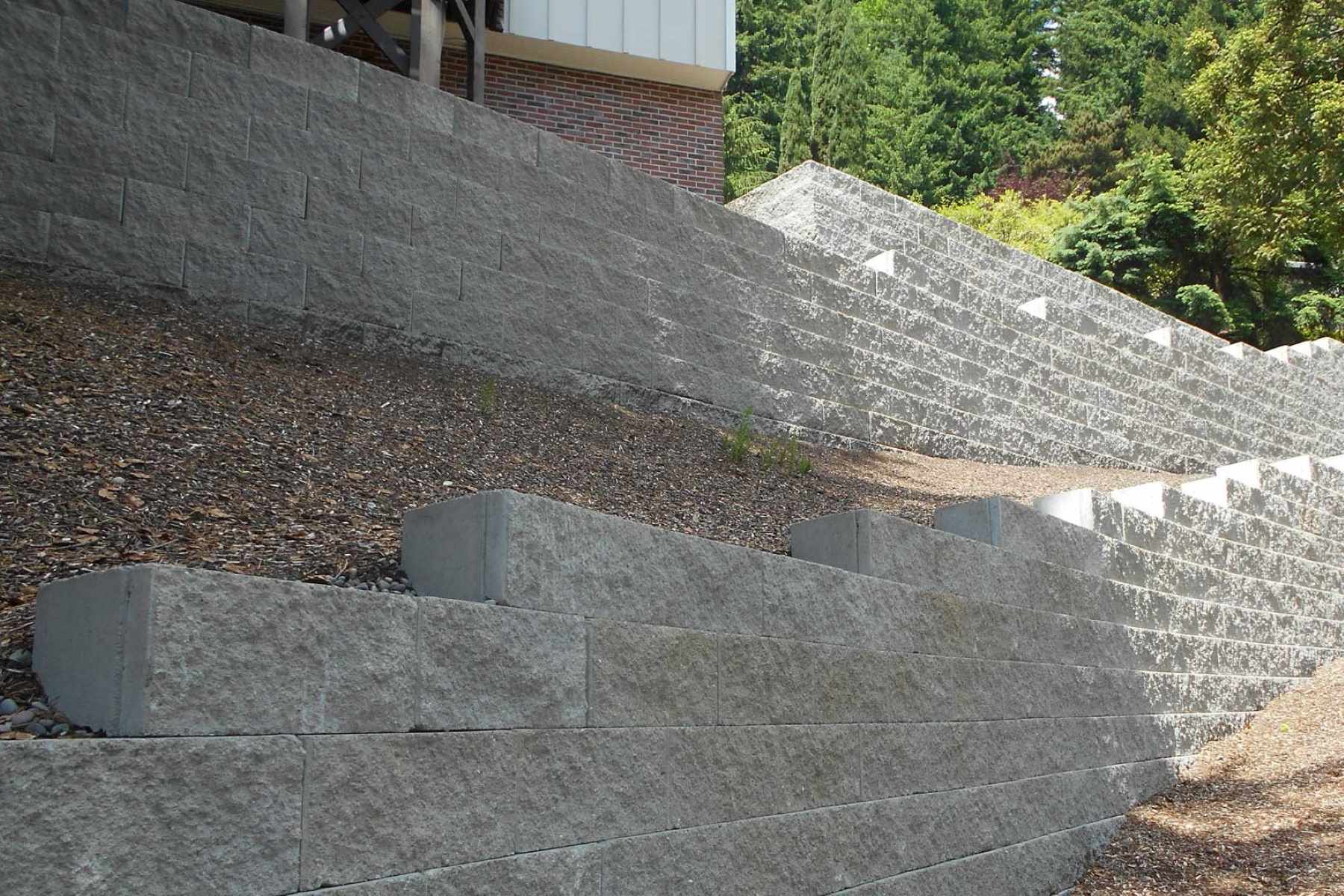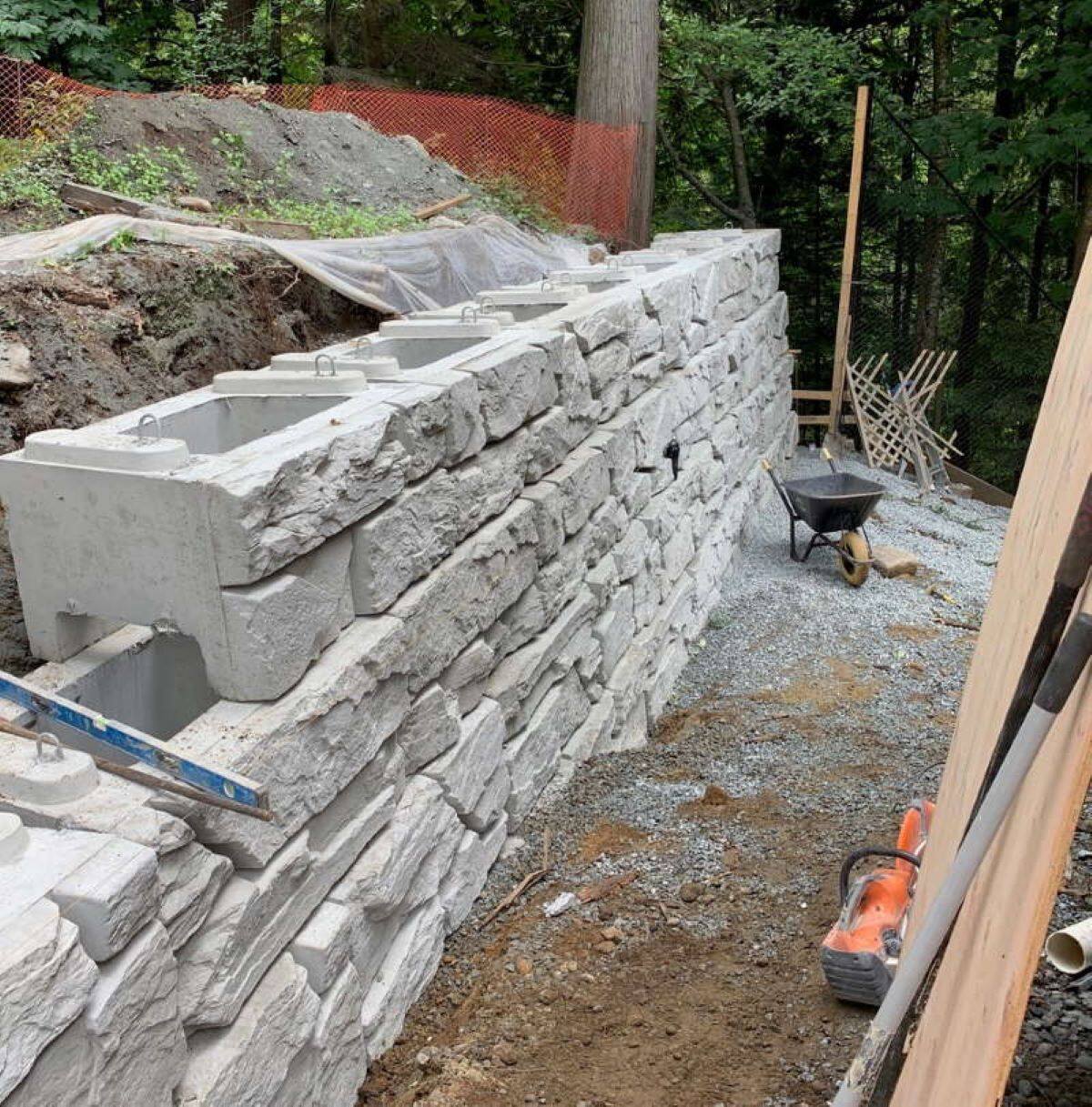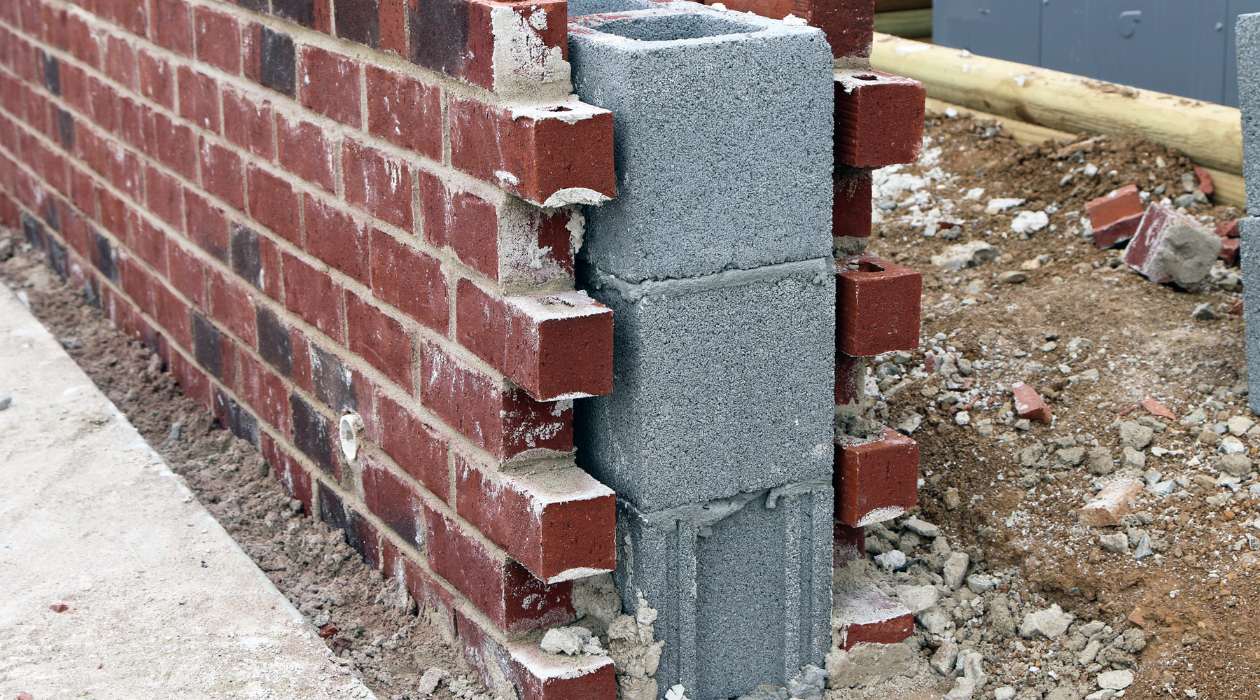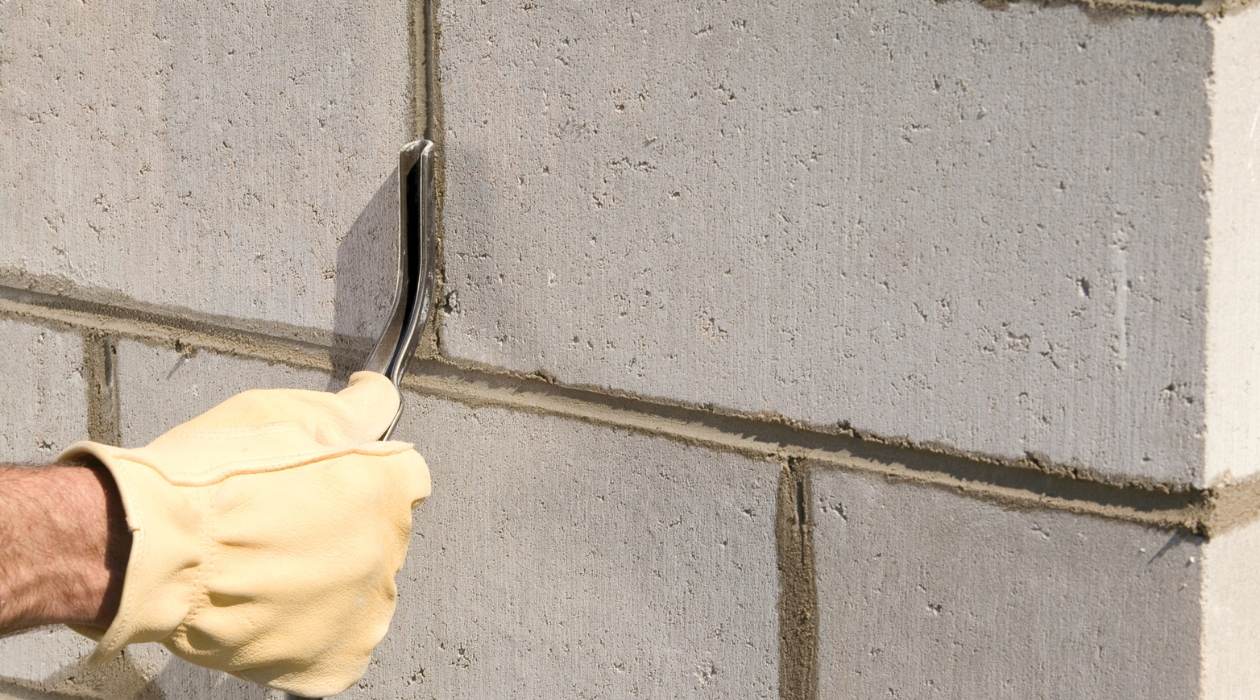Home>Ideas and Tips>DIY Guide: Building A Retaining Wall For Erosion Control


Ideas and Tips
DIY Guide: Building A Retaining Wall For Erosion Control
Modified: November 1, 2024
Learn how to build a retaining wall to prevent erosion and enhance your outdoor space with our step-by-step DIY guide. Perfect for beginners and experts alike.
(Many of the links in this article redirect to a specific reviewed product. Your purchase of these products through affiliate links helps to generate commission for Storables.com, at no extra cost. Learn more)
Erosion is a common issue in many backyards, especially those with slopes. It can lead to soil loss, damage to landscaping, and even structural problems with your home. One effective way to prevent erosion is by building a retaining wall. In this article, we will guide you through the process of building a retaining wall, from planning and preparation to the final touches. Whether you're a seasoned DIY enthusiast or a beginner, this guide will help you create a sturdy and functional retaining wall that not only controls erosion but also enhances your outdoor space.
Erosion can wreak havoc on your yard, causing soil to wash away and leaving your landscape looking like a mess. But don't worry, building a retaining wall is a great way to keep your soil in place and prevent further damage. Plus, it can add a nice touch to your outdoor space. So, let's dive into the nitty-gritty of how to build one.
Planning and Preparation
Before you start digging, it's crucial to plan and prepare your site thoroughly. Here are some steps to follow:
Read more: How To Build Retaining Wall On A Slope
Determine the Purpose and Location of Your Retaining Wall
First things first, figure out where you need to build the retaining wall. Look at the slope of the land, the direction of water flow, and any existing structures or utilities in the area. Make sure you understand why you need a retaining wall and where it will be most effective.
Check Local Regulations
Building a retaining wall may require a permit, especially if it exceeds a certain height or is near property lines. Check with your local building authority to see if any permits are needed and what regulations you must comply with. Additionally, consult with your homeowner's association (HOA) if you have one, as there may be specific rules or restrictions.
Choose the Right Materials
Retaining walls can be made from various materials such as wood, bricks, natural stones, or concrete blocks. For a DIY project, interlocking concrete retaining wall blocks are often the best choice because they are easy to install and provide extra security.
Measure and Mark the Area
Use a tape measure to determine the length and width of your retaining wall. Mark off the area with garden stakes and a mason’s line or other string. Tie the string to the stakes a few inches higher than the desired height of the wall. Use line levels to make sure the string is level.
For curved walls, use paint to mark the shape and location of the wall. This will help you visualize how your wall will look once it's built.
Read more: How To Build Stairs In A Retaining Wall
Clear the Site
Remove any plants, debris, or obstructions from the marked area. This will give you a clear space to work on and ensure that your wall is built on a solid foundation.
Step-by-Step Instructions for Building a Retaining Wall
Dig a Trench
Dig a trench for the first course of your interlocking retaining wall blocks. The trench should be deep enough to bury at least half the height of your first course of blocks plus 3 inches of paver base. Depending on the size of your blocks, this depth will typically be between 4 to 8 inches.
The trench should be twice as wide as a single block. Once you’ve dug the trench, compact it with a hand tamper or vibrating plate compactor.
Lay the Base
Fill the trench with a 2- to 3-inch layer of gravel. Choose gravel that has stones sized between 1/2-inch and 3/4-inch or paver base. Use a rake to ensure the stones are evenly distributed.
Tamp the base with your tamper to make sure it’s evenly compacted. This creates a stable base for your retaining wall.
Read more: How To Build A Brick Retaining Wall
Install the First Course
Place the first row of blocks, stones, or timber, making sure they are level and aligned. Use a level to ensure they are horizontal. For interlocking blocks, follow the manufacturer’s instructions for proper alignment.
Build the Wall
Add more rows, staggering the joints and using mortar or other methods to secure them. Keep the wall plumb and level as you build, using a level and string line for guidance.
Backfill and Compact
Backfill behind the wall with soil and gravel, compacting it to provide stability and prevent settling. This step is crucial as it helps distribute pressure evenly across the wall.
Add Drainage
Install a drainage system like perforated pipes or gravel to ensure proper water flow and prevent buildup behind the wall. This will help relieve pressure on your retaining wall during heavy rainfall or irrigation.
Read more: How To Build A Concrete Retaining Wall
Finish the Top
Add a cap or coping to the top row for a finished look and extra protection against weathering elements like rain or snow.
Tips for Building a Retaining Wall
Avoid Parallel Slopes
The wall should never run parallel to a slope; instead, create steps up or down to ensure the top of the retaining wall will be level. This helps prevent water from accumulating behind the wall.
Extend Downspouts
Extend downspouts so they don’t dump water right at the top of the hill at full force. This simple step can significantly reduce erosion by slowing down water flow.
Read more: How To Build A Retaining Wall For A Driveway
Use Proper Drainage Materials
Use well-draining materials like gravel or sand behind your landscape retaining walls. Avoid using clay soil as it retains water, which can exert more pressure on your retaining wall.
Consider Planting Native Plants
Planting native plants around your retaining wall can help manage water efficiently. These plants require less water and maintenance while providing additional stability through their roots.
Common Mistakes to Avoid
Inadequate Foundation
One common mistake is not preparing a solid foundation for your retaining wall. Without a firm base, the wall can shift or collapse under pressure.
Poor Drainage
Many forget proper drainage when building a retaining wall. Without it, water pressure can build up and damage the wall over time.
Using Wrong Materials
Using materials not suited for your wall’s height or purpose can lead to structural issues down the line.
Skipping Maintenance
Regular maintenance is crucial for retaining walls; check your wall for signs of wear regularly and fix any issues quickly before they become major problems.
Calculating Costs
Calculating the cost of building a retaining wall helps you budget effectively:
- Measure Wall Dimensions: Determine the length and height of your wall.
- Choose Materials: Select materials based on their cost per unit.
- Include Tools & Equipment: Add costs for tools like trowels, levels, and tamper.
- Labor Costs: If hiring help, factor in labor costs.
- Unexpected Expenses: Add a bit extra for unexpected expenses like material breakage or additional labor.
DIY vs Hiring Professionals
Deciding between DIY and hiring professionals involves weighing pros and cons:
Pros of DIY:
- Cost-Effective: Saves money by avoiding labor costs.
- Sense of Achievement: Provides a sense of accomplishment upon completion.
- Control Over Project: Allows complete control over every aspect of the project.
Cons of DIY:
- Time-Consuming: Requires significant time and effort.
- Skill Requirement: Needs some skill and knowledge about construction techniques.
Pros of Hiring Professionals:
- Expert Results: Ensures expert results due to professional expertise.
- Time-Saving: Saves time by handling all aspects of the project.
- Handling Permits & Complex Issues: Handles permits and complex problems efficiently.
Read more: DIY Guide To Building A Backyard Pergola
Cons of Hiring Professionals:
- Higher Costs: Costs more than doing it yourself.
- Less Control Over Project: Less control over every aspect of the project.
Legal and Permitting Requirements
Before building a retaining wall, check legal and permitting requirements:
- Permits: Many areas require permits for walls over a certain height.
- Local Regulations: Local regulations might dictate wall materials and design.
- Drainage & Erosion Rules: Some regions have rules about drainage and soil erosion.
Contact your local building authority for specific requirements to ensure compliance with all laws and avoid legal issues.
Environmental Considerations & Sustainable Practices
When building a retaining wall, consider environmental factors:
- Sustainable Materials: Use sustainable materials like recycled concrete or natural stone to reduce environmental impact.
- Efficient Water Management: Design the wall to manage water efficiently by installing proper drainage systems.
- Native Planting: Plant native plants around the wall which require less water and maintenance while providing additional stability through their roots.
By making eco-friendly choices, you help preserve the environment for future generations.
Maintaining & Repairing Your Retaining Wall
To keep your retaining wall in good shape, regular maintenance and occasional repairs are needed:
- Clear Debris: Clear debris from behind the wall periodically.
- Check for Signs of Wear: Regularly check for signs of wear such as cracks or shifting blocks.
- Fix Issues Quickly: Address any issues promptly before they become major problems.
Read more: Why Is Grass Used For Erosion Control
Conclusion
Building a retaining wall is a rewarding DIY project that not only prevents erosion but also enhances your outdoor space. By following these steps and tips, you can create a sturdy and functional retaining wall that will last for years to come. Remember to plan carefully, choose the right materials, and ensure proper drainage to avoid common mistakes. Whether you decide to go the DIY route or hire professionals, understanding legal requirements and environmental considerations will ensure your project complies with all laws and contributes positively to the environment.
With this comprehensive guide, you're ready to tackle your next DIY project with confidence. Happy building
Was this page helpful?
At Storables.com, we guarantee accurate and reliable information. Our content, validated by Expert Board Contributors, is crafted following stringent Editorial Policies. We're committed to providing you with well-researched, expert-backed insights for all your informational needs.








0 thoughts on “DIY Guide: Building A Retaining Wall For Erosion Control”